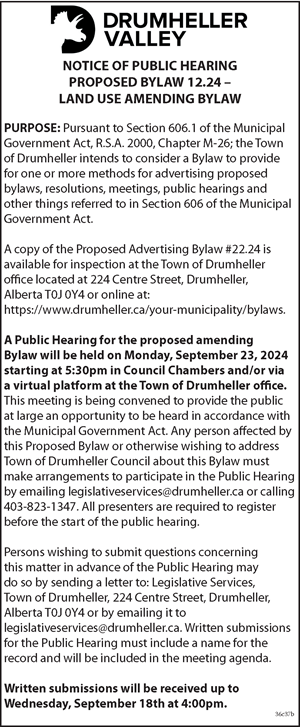
The Dalum Fire Department recently received new tool to handle emergencies in the area.
The Fire Rescue Command truck is the seventh and newest truck in the Dalum fleet.
The new truck was custom built by heavy truck manufacturer Fort Garry in Red Deer. No cookie-cutter truck would do, especially when considering the unique challenges faced by rural firefighters.
“In Dalum we’re unique in that we’re rural, so we have to carry all of our gear with us. The four wheel drive is unique to this size of vehicle. We needed it because we’re rural and because of our hilly terrain,” said Albert Jensen, Fire Chief of Dalum.
Basically, wherever there is an emergency the new truck can make it there.
The list of features that the truck boasts is extensive and includes six 1000 Watt lights mounted on top, 380 horsepower, four wheel drive, a heavy duty winch system, generators to keep warm, air conditioners to keep cool (although there hasn’t been much reason to use that yet), and the list goes on.
The new truck was commissioned to be built after years of using an old, refitted school bus to do the same job.
“It served us well. It still runs good, but it was time,” said Jensen. “It was retired when we got it.”
The total cost of the new truck is estimated to be $350,000. Wheatland County contributed 60 per cent of the money and the remaining funds were generated locally through various fundraising efforts. No corporate money was used to purchase the truck.
After the design was set and everything paid for, it took eight months and an estimated 1800 man hours for the truck to be finished.
Residents in Wheatland County and Drumheller may see, or have seen it already, throughout the area. Through mutual aid agreements, the Dalum Fire Department may be called upon to bring the new truck to an emergency anywhere in Wheatland County or Drumheller.
“We’ve only had four or five calls with this truck,” said Jensen. “But, for example, if Drumheller had a major disaster we could be called on scene to help.”
Residents should expect to see more unique vehicles to handle emergencies. Whereas before, rural fire departments relied on hand-me-downs from municipalities, now communities are having vehicles built that suit their unique considerations and consequently be better able to save lives.





















